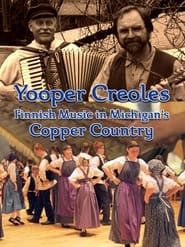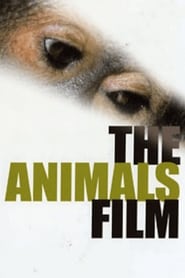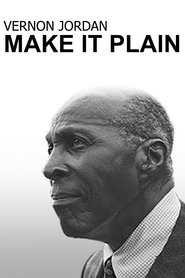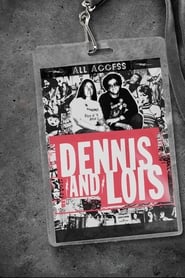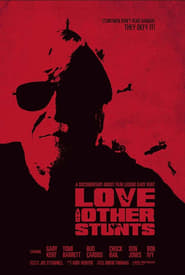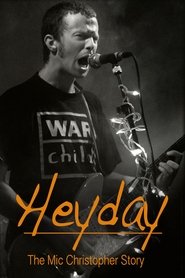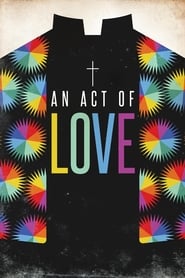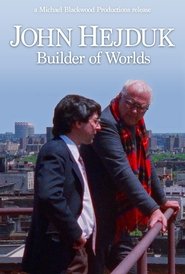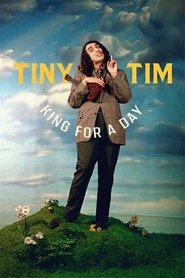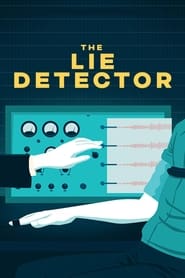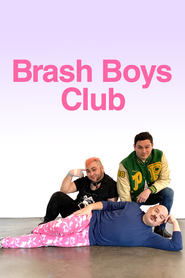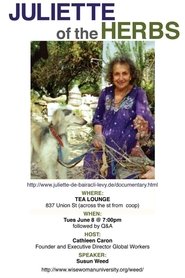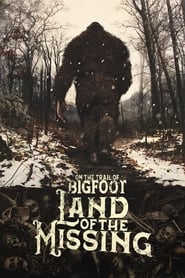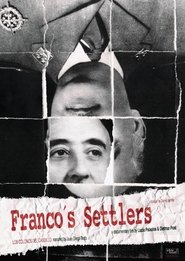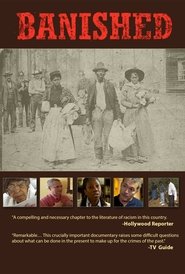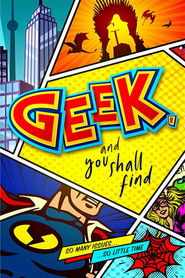Popular Documentary Movies on Free Services - Page 154
-
Yooper Creoles: Finnish Music in Michigan's Copper Country
2019
star 8When the immigrants came to America, their cultures entered the "great melting pot." In Michigan's Upper Peninsula Finnish immigrants mixed their musical traditions with many other cultures, creating a sound that was unique to the "Copper Country." -
The Animals Film
1981
The Animals Film
1981
star 9The film offers a comprehensive examination of the exploitation of animals in modern society. -
Vernon Jordan: Make it Plain
2020
From filmmaker Dawn Porter (who earlier this year directed "John Lewis: Good Trouble"), the film explores the remarkable journey of Jordan from modest Southern origins to national renown as a pioneering attorney, businessman, civil rights leader, and as a fixture (could one also say a "fixer?") on the DC scene. Jordan's story is told principally through a chronological narration of his life and accomplishment, most of it taken from recent (2019) interviews with and narration by Jordan himself. His early life in Atlanta is limned, where Jordan describes the treasured influence of his mother Mary and his early academic successes (including a law degree from Howard University). His activities in the civil rights movement in the 1960's and 1970's are highlighted, culminating in his ten-year tenure as director of the Urban League. -
Dennis and Lois
2018
Dennis and Lois
2018
A documentary focused on rock 'n' roll super fans Dennis and Lois and their journey over 40 years. -
The Final Quarter
2019
The Final Quarter
2019
star 7.5Australian documentary filmmaker Ian Darling re-examines the incidents that marked the final 3 years of Indigenous footballer Adam Goodes' playing career. Made entirely from archival footage, photos and interviews sourced from television, radio and newspapers, the film reviews the national conversation that took place over this period. -
Love and Other Stunts
2018
Gary Kent was the king of B movies in the Sixties and Seventies, working for indie directors from Richard Rush to Ray Dennis Stickler to Al Adamson, but he's tackled even larger real-life challenges. -
Heyday - The Mic Christopher Story
2019
star 8This heartfelt story charts singer-songwriter Mic Christopher's humble beginnings busking on the streets of Dublin, his rise to rock star, the near fatal accident that nearly left him millimeters from death, through to his final year where he lead an entire generation of Irish musicians onto fame, success and new artistic highs. Told through the eyes of those whose lives he touched (Oscar-winner Glen Hansard, writer/actor Sharon Horgan, Mike Scott of The Waterboys, Bronagh Gallagher, Josh Ritter, Lisa Hannigan, Rónán Ó'Snodaigh and many more. This epic story of extraordinary music and friendship will both touch and inspire. -
An Act of Love
2015
An Act of Love
2015
star 2.6In 2013, United Methodist minister Frank Schaefer was defrocked for officiating at his son's same-sex wedding. Suddenly, the Reverend found himself an accidental LGBTQ activist. Considering all sides of the debate, this powerful documentary shows how the groundwork for a 2016 showdown that may transform American Christianity is being laid. -
Megalodon!: Great White Godfather
2021
star 3.570-foot Sharks with teeth like shovel blades and fins the size of huge sails. A whaler's harpoon would bounce off Megalodon like a toothpick. Explore Mega! -
I Want My MTV
2019
I Want My MTV
2019
star 7.5The film is about the formation of a music channel that has shaped modern pop culture. On August 1, 1981, the life of a whole generation of Americans changed forever - on this day MTV began its broadcasting day, making VJ a new teen hero and creating a canon of music video as a vivid artistic statement. -
John Hejduk: Builder of Worlds
1992
A poet among architects and an innovator among educators, John Hejduk converses with poet David Shapiro at The Cooper Union about the mystery and spirit of architecture. His own sketches and structures are shown -
Tiny Tim: King for a Day
2020
star 6.1The story of Tiny Tim’s improbable rise to stardom is the ultimate fairytale - and so is that of his downfall. For a brief time, the shy and truly unusual outsider artist was the biggest star in the world. -
The Lie Detector
2023
The Lie Detector
2023
star 8In the first decades of the 20th century, when life was being transformed by scientific innovations, researchers made a thrilling new claim: they could tell whether someone was lying by using a machine. Popularly known as the “lie detector,” the device transformed police work, seized headlines and was extolled in movies, TV and comics as an infallible crime-fighting tool. Husbands and wives tested each other’s fidelity. Corporations routinely tested employees’ honesty and government workers were tested for loyalty and “morals.” But the promise of the polygraph turned dark, and the lie detector too often became an apparatus of fear and intimidation. Written and directed by Rob Rapley and executive produced by Cameo George, The Lie Detector is a tale of good intentions, twisted morals and unintended consequences. -
Brash Boys Club
2020
Brash Boys Club
2020
Brash Boys Club, one-night of stand-up, gay comedy featuring three diverse comedians each doing a half-hour set. -
Tabloid
2011
Tabloid
2011
star 6.4A documentary on a former Miss Wyoming who is charged with abducting and imprisoning a young Mormon Missionary. -
Juliette of The Herbs
1998
A beautiful lyrical portrait of the life and work of Juliette de Bairacli Levy: herbalist, author, breeder of Afghan hounds, friend of the Gypsies, traveller in search of herbal wisdom and the pioneer of holistic veterinary medicine. Her well-loved and now classic herbal remedies for animals and for children have been a vital inspiration to the present day herbal renaissance and holistic animal care community. For more than 60 years Juliette lived with the Gypsies, nomads and peasants of the world, learning the healing arts of these people who live close to nature, and learning from nature herself. Now 85 years of age, Juliette's life story is as colourful and exciting as her tremendous wealth of herbal knowledge. Filmed on location in many beautiful countries, and interwoven with Juliette's vast collection of archival photographs, together with scenes of Gypsies dancing and Bedouins with their herds. -
On the Trail of Bigfoot: Land of the Missing
2023
star 5.5Centuries of reports of hair-covered creatures roaming Alaska have been uncovered. Yet, beyond the mysterious apelike animals that haunt the forests of the 49th state there exist numerous legends of horrific beings that blur the line between Bigfoot and something else. Something with a far darker agenda. Now, eyewitnesses and experts alike recount stories that will chill you to your bone. Stories that tie Bigfoot-like creatures to tales of mountain giants, and even missing people. -
Franco's Settlers
2013
Franco's Settlers
2013
star 6Explores Llanos del Caudillo, a town from La Mancha founded in 1955 by the dictator Franco; a discreet and calm attempt to dissect recent Spanish history and to review how some Spaniards deal with the cruel heritage of their past. A reflection on what to do with the Francoist legacy in towns, streets and squares in Spain. -
Banished
2007
Banished
2007
star 7.5A look at three U.S. cities, which were part of many communities that violently forced African American families to flee in post-reconstruction America. -
Geek, and You Shall Find
2019
star 5.7After attending a local comic book convention, three filmmakers are so moved by the stories shared with them by cosplayers that they decide to investigate geek culture even further. Attending other conventions across the country and speaking with legendary creators such as Kevin Eastman, Stan Lee and George R.R. Martin, the trio not only begins to find answers to why people gravitate towards superheroes and stories about superheroes, but how being a geek could help them live deeper, richer lives. Geek, and You Shall Find tells the stories behind the creation of several popular stories including Superman, Star Wars, Game of Thrones and the Teenage Mutant Ninja Turtles. In sharing how these characters and their worlds came to be, creators reveal how often they have been inspired by real-life social ills. Most importantly, by continuing to speak with fans who have been inspired by these creations, this film reveals how superheroes have the potential to combat these social issues as well.
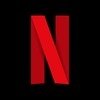 Netflix
Netflix
 Amazon Prime Video
Amazon Prime Video
 Apple iTunes
Apple iTunes
 Apple TV Plus
Apple TV Plus
 Disney Plus
Disney Plus
 Google Play Movies
Google Play Movies
 Paramount Plus
Paramount Plus
 Hulu
Hulu
 HBO Max
HBO Max
 YouTube
YouTube
 fuboTV
fuboTV
 Peacock
Peacock
 Peacock Premium
Peacock Premium
 Amazon Video
Amazon Video
 The Roku Channel
The Roku Channel
 AMC+
AMC+
 Kocowa
Kocowa
 Hoopla
Hoopla
 The CW
The CW
 Vudu
Vudu
 Starz
Starz
 Showtime
Showtime
 PBS
PBS
 Pantaflix
Pantaflix
 FXNow
FXNow
 Tubi TV
Tubi TV
 Kanopy
Kanopy
 Comedy Central
Comedy Central
 Crunchyroll
Crunchyroll
 Microsoft Store
Microsoft Store
 Redbox
Redbox
 Sun Nxt
Sun Nxt
 ABC
ABC
 DIRECTV
DIRECTV
 Crackle
Crackle
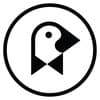 Fandor
Fandor
 Plex
Plex
